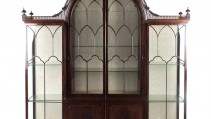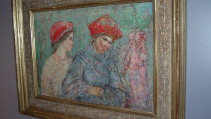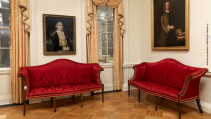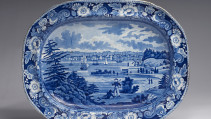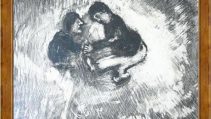By GRAHAM BOWLEY OCT. 11, 2015
“Two lawsuits in the Knoedler & Company gallery forgery case, one of the art market’s more stunning scandals, are set to go to trial in January because there is “ample circumstantial evidence” for a jury to decide whether the gallery’s former president knew that some paintings she was selling were fake, a federal judge said in a ruling on Friday.
The judge issued the 83-page ruling to explain why last month he had denied motions by the gallery and its former president, Ann Freedman, to dismiss the lawsuits filed by buyers of two fake works.
Before it abruptly closed in 2011, Knoedler, then the oldest gallery in New York, had over 15 years, according to the court papers, sold 32 forgeries that it represented as being Modernist masterworks by painters like Jackson Pollock, Mark Rothko and Robert Motherwell.
The paintings were created by a single man in Queens and brought to the gallery by Glafira Rosales, a Long Island dealer who pleaded guilty to charges related to the fraud in 2013.
Federal officials have concluded that Ms. Rosales and her boyfriend commissioned the forgeries and used the venerable gallery to create legitimacy for the works.
The gallery and Ms. Freedman have repeatedly said that they, too, were misled by Ms. Rosales and were convinced the art was genuine. But buyers of the fakes have challenged that account in several lawsuits accusing Ms. Freedman of knowingly participating in the fraud.
And now the judge in two of the cases, Paul G. Gardephe of United States District Court in Manhattan, has ruled that the suits should go to trial.
“Plaintiffs have offered ample circumstantial evidence demonstrating that Freedman acted with fraudulent intent and understood that the Rosales Paintings were not authentic,” he wrote in his strongly worded ruling.
A lawyer for Ms. Freedman, Luke Nikas of Boies, Schiller & Flexner, said: “The court decided nothing on the merits, only whether the parties’ competing arguments must be resolved by a jury. The trial will finally show the truth: Plaintiffs just want to print money — their lawsuits request three times more than what they paid for the art — and Ann Freedman just wants justice.”
One of the cases was brought by John D. Howard, a collector who bought a fake attributed to Willem de Kooning. The other concerns a fake Rothko bought by the family of Domenico De Sole, chairman of Sotheby’s. The family paid $8.3 million in 2004 for the work, which Knoedler had acquired from Ms. Rosales for $950,000, according to the court papers.
In explaining his decision, the judge gave an inventory of evidence that he said suggested Ms. Freedman could have recognized something was wrong, including changes in Ms. Rosales’s account of how she had come into possession of the paintings, all said to have been owned by a collector, “Mr. X,” whose identity the gallery never learned.
In addition, the judge said that the family of the artist Richard Diebenkorn had — as early as the mid-1990s — raised questions about the authenticity of some paintings that Ms. Rosales provided and said were Diebenkorns.
But the sales of Rosales fakes, which had started in 1994, continued until 2008, court papers say, even after a report by the International Foundation for Art Research in 2003 questioned the authenticity of a work said to be a Pollock, and the gallery then refunded the money to the buyer.
In her defense, Ms. Freedman has discussed her efforts to verify the account Ms. Rosales provided about the collector, including having the gallery staff research it. She also said she had widely exhibited the paintings in places where their attribution could have been challenged, and that she had bought several herself.
But Judge Gardephe said that the exhibiting had created “a facade of credibility” and that, whatever her motive, Ms. Freedman had used the fact that she had purchased Rosales works as a “promotional device.”
In his decision, the judge dismissed complaints against Michael Hammer, Knoedler’s owner, and Jaime Andrade, a former gallery employee, whom the ruling identified as the person who had introduced Ms. Rosales to Ms. Freedman.
John R. Cahill, a lawyer for Mr. Howard, said that his client and other plaintiffs “hope that a jury will order Ann Freedman, Knoedler, and Michael Hammer’s company to return their money and pay punitive damages for their key parts in the fraudulent conspiracy.”
A lawyer for Mr. De Sole and his family, Gregory A. Clarick, said that the ruling “recognizes that the De Soles have mounted compelling evidence to prove that, for over a decade, Knoedler and its president Ann Freedman ran an unlawful racketeering conspiracy that defrauded victims out of tens of millions of dollars.”
A lawyer for the Knoedler gallery and Mr. Hammer, Charles D. Schmerler, said that the decision vindicated Mr. Hammer “completely and finally,” and that he was confident Knoedler would “prevail on the few remaining claims.”
The scandal has given rise to 10 civil suits in total, although four have been settled out of court. Ms. Rosales’s boyfriend, Jose Carlos Bergantiños Diaz, has also been charged in the case, but he has not been extradited from Spain. The Queens painter whom federal authorities have identified as the forger, Pei-Shen Qian, fled to China and has said in an interview that he did not realize his work was being sold as the real thing.”
Source: NY Times

